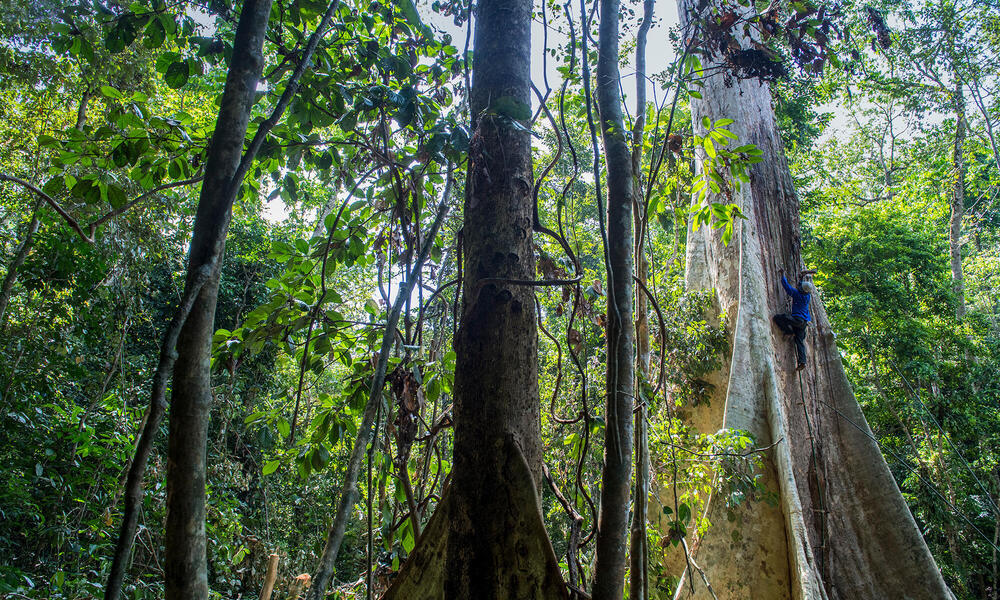Delivery Matters – Magazine Articles

[ad_1]
The UK click and collect market is expected to grow 45.8% over the next five years to reach £ 9.8 billion by 2023, but growth will slow as the execution method matures and that the services offered by retailers will be optimized, according to analysis company GlobalData.
The latest report from the company “Click & Collect UK 2018 – 2023” reveals that clothing and footwear accounts for a significant proportion of click and collect orders, accounting for 59.9% of spend in 2018. Although the majority of Major omnichannel retailers have had their proposition over the past few years in lengthening order times, increasing speed and minimizing costs, service improvements have leveled off as these elements have been optimized.
“Although 79.9% of click and collect users were satisfied with click and collect services in 2018, this figure is significantly lower than home delivery, which stands at 89.5%,†says Emily Salter, Retail Analyst, GlobalData.
“Retailers continue to introduce measures to meet growing consumer expectations for home delivery, such as offering same-day services, led by online games such as Amazon and Asos. Next is one of the few omnichannel retailers currently offering a click and collect proposition to compete with the speed and cost of door-to-door delivery thanks to the recent introduction of free one-hour collection at select stores.
Additional purchases increase the importance of click and collect for retailers, as 39.2% of customers purchased an additional item when collecting their last order, according to GlobalData. However, this varies considerably from industry to industry, with food and grocery products being the industry in which the most customers purchase an additional item, due to low prices and the essential nature of many products, and presence in a range of stores.
However, as Salter explains, store closures will inhibit click and collect growth, as will measures such as delivery economy programs and same day or hourly home delivery.
FILL FROM THE STORE
While some retailers, including Schuh and Currys PC World, are able to process click and collect orders in-store, they are still in the minority. For others, orders are picked and packaged and shipped from a distribution center (DC) and then sent to the store of the customer’s choice.
In many cases, this stock may be on a shelf in the store that the customer will visit to pick up their order. This is the case for more than a third of orders placed online for in-store pickup by customers of health and wellness retailer Holland & Barrett. As Emma Mead, the company’s group omnichannel director, points out, however, all of her click and collect orders are picked, packaged and shipped from a central distribution center, not the stores.
“We could have chosen [orders] from the store, â€she said. However, technology prevents the retailer from doing this because they lack confidence in stock levels and cannot display real-time information. “Therefore, having a single view of inventory is on our roadmap this year,†she told delegates at the MetaPack delivery conference.
And being able to do it is important. “If you have a product in store and you don’t provide the ability for customers to go online and pick it up right away, you’re missing out on the biggest differentiator you have compared to online retailers who can’t. happen, â€says Mike Richmond, Commercial Director, Doddle.
Some pureplays are starting to do something about it, especially on college campuses. Fashion retailer Asos has launched a same-day click and collect service that allows students and other customers to order a product and pick it up that evening from the University of Leeds Student Union. Asos Instant – On Campus allows customers to order items before noon on weekdays and then pick them up from 5 p.m. to 7 p.m.
This follows the launch of Asos Instant in London, Manchester, Leeds and Birmingham. Using On the dot’s machine learning algorithms, its fleet of 5,000 couriers, and an open API to display time slots, Asos customers can select the delivery times that are right for them.
This shows how delivery is more than profitability and impacts the customer experience, as anyone who said anything about how they should keep promises made to customers or changed the order cut-off time. during a peak period.
Emma Mead of Holland & Barrett found that adding lockers as a delivery option had a significant improvement in how customers viewed the services offered by the retailer, even though only a small number of customers used the lockers. “Just because all customers want this service doesn’t mean you should be asking yourself what this service should be, because it will move your overall NPS in a positive direction,†she said.
What really made him understand the impact that delivery has not only on the customer experience but also on the bottom line was the week when there were payment issues on the site and a treadmill in the warehouse broke down. This resulted in the next day delivery being taken off the site and not offered to customers.
Mead focused on sorting out the payment issues believing they would be the “biggest problem we have on the site in terms of bad experience.” However, after analyzing the impact of the two issues, she found that “the impact on the conversion rate of the site’s next day delivery checkout was 3 times greater than the problem of the payment issue.” I was completely focused on the wrong point, â€she concedes, admitting that she never realized how important the next day delivery service was.
“There are times when you’re busy and pushing the limit, but in reality it makes a significant difference for our customers,†she adds.
And the customers who use overnight delivery a lot at Holland & Barrett are new customers. Thus, the focus on payment issues instead of delivery not only affected the conversion rate but also the acquisition.
“Delivery is more important to your customers than I thought,†she said.
END OF PIC RULE
Delivery, whether it’s home or in-store pickup, also has a major impact on the overall experience. Just think about how different you feel after watching two different football games. In the first, your team scores two minutes after the start of the match, but this is followed by “boring†play for the remaining 88 minutes; in the second scenario, the goal comes in the last two minutes after 88 minutes of draw-nil play. Which one leaves you feeling the best and is the most memorable? Mike Richards, commercial director of the Doddle parcel store network, believes this will be the second scenario.
This, he says, citing Daniel Kahneman’s book Thinking, Fast and Slow, is called the Peak End Rule. He explains it as “no matter how many touch points you have in a customer journey, the only two points that really matter are the peak – where the emotion is most intense – and the end point of the customer journey because , from a behavioral perspective, these are the only two things we really remember.
This is something retailers can learn if they want to give their customers a lasting good impression of their brand. “A good ending sparks great memories, references and loyalty,†says Kahneman.
With e-commerce, the peak of emotion is at the time of purchase. This is followed by a period of time before the order is delivered or picked up. Therefore, retailers need to make the ending memorable – the fulfillment point if you will – in order to leave that lasting good impression.
Among the retailers that try to do this are subscription services such as Dollar Shave Club which asks customers about their interests when they sign up for the service. When their box arrives, it includes a personal magazine on what interests the customer. Mr. Porter adds a sticker with the customer’s name on each box while Wiggle includes a 10-piece haribo bag with each order.
Retailers have thought about the packaging and the box the customer opens, but the same thinking has been put on the click and collect, the experience of entering the store looking for the counter. collection or interaction with staff? Nike a.
Members of its NikePlus program can reserve sneakers through the Nike app and have them delivered to an in-store locker. Their NikePlus member pass unlocks the locker, they try their order, scan the QR code on the pairs they keep, and return the rest to the locker. It’s just click and collect, but packaged in the retail theater.
A drive-thru service also allows Nike by Melrose customers in Los Angeles to text the store, drive there, and pick up or return an order. The Nike app also allows customers to quickly checkout, requesting that items seen on in-store mannequins be taken to the fitting room or delivered directly to the store.
So, as click and collect usage continues to increase and pureplays try different ways to speed up the time between a customer ordering online and having the product in their hands, is it time to omnichannel retailers to re-examine click and collect? I think so.
[ad_2]






